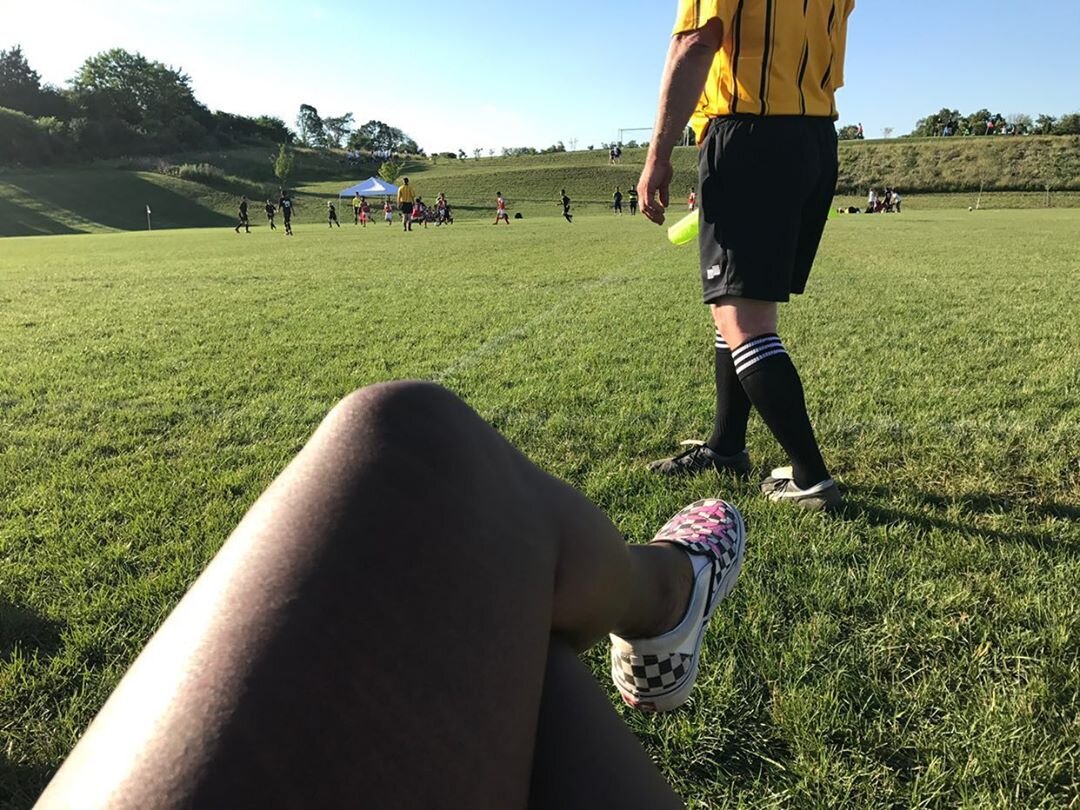Stylist And Soccer Mom Ebony Ugo On The Dissolution Of The U.S. Soccer Development Academy's Youth League
Author Ebony Ugo and her son, Kai.
Based in New York City, Ebony Ugo brought the wonderful Kely Nascimento-Deluca, who we interviewed in SEASON issue 06 to our attention, and her football roots stem from her father, a former football player himself. A stylist, writer, and overall amazing creative soul, Ugo is redefining the ‘soccer mom’ trope with her finger firmly on football’s American pulse as her son Kai follows in his grandfather’s footsteps and progresses in the game. Here, she weighs up the impact and implications of the dissolution of the U.S. Soccer Development Academy's youth league.
As COVID-19 pressed pause on leagues worldwide and she was forced indoors with her four children, she started thinking about the condition of the Development Academy (DA) and its sudden dismantling, so she took time to write about the hottest topic in US Youth Soccer. For those not aware, the U.S. Soccer Development Academy was an American league with the goal to provide education, resources, and support to impact everyday club environments and develop world-class players. Prominent names in US women’s soccer like Tobin Heath were involved in the administration and development of the Girls Academy.
In the midst of the global Covid-19 pandemic, the world of youth soccer in America has abruptly been turned upside down. On 15 April 2020, U.S. Soccer issued a statement that announced the end of the Development Academy (DA), citing financial issues due to the pandemic.
There had been chatters within the soccer community about the fate of the DA for about two years leading up to the official announcement. During the 13 years of the league’s operation on the boys’ side and three years for the girls’, there were varied opinions on its efficacy for the future stars of American soccer.
Kai walking away from a game.
Youth soccer in America is at best, complex, but since we are talking about the DA, let’s breakdown the structure and function of the league. The DA’s ultimate mission was to develop and produce elite homegrown talent through its programming that could compete on the global stage. More training, fewer games. And consistent, evenly matched competitive games, essentially creating the highest standard for competitive youth soccer in the states. Major League Soccer (MLS) is the top tier in American Soccer and the DA provided MLS academies and non-professional youth clubs a direct pathway to the top. It also gave access to local clubs that would otherwise be ‘left out’ in the pipeline, giving them their chance to grow by competing against quality competition within their respective regions.
The sudden dissolution of the DA opens the floor for discussion about the deeply flawed infrastructure of youth soccer in America. The easy solution would be to model the US Youth structure after the rest of the world, but one huge difference is the culture. In the US, soccer is ranked as the fifth most popular sport. There’s no doubt that soccer is growing at a fast pace domestically (shoutout to the US Women’s national team), especially within the youth sports arena. In 2007, US soccer, through the DA, set out to create a higher standard for youth soccer that was desperately needed. Starting with basic fundamental practices such as improving the environments within clubs and even further development for referees and coaches too.
Ugo’s son Kai, in action during a game.
For years there has been the argument about the deep repercussions pay-to-play has on the game here. Some say it continues to perpetuate the elitist structure which is a direct characteristic of American capitalism. It lessens the quality of play even at the supposed highest level of youth soccer, the DA. And then there’s the perspective that in order to keep the bar raised at a steady level there has to be a monetary exchange, there’s no way around it at least not in the good ole’ USA. But how do we find the balance between maintaining the integrity of the sport and investing at the top, in coaching for example, where it will make a meaningful impact?
An MLS Academy scout I spoke with, who grew up playing overseas in Europe, expressed that you’d be hard-pressed to find any B licensed coach willing to volunteer. The DA was a success in his eyes where he consistently saw the highest level of play identified, at DA tournaments in hotbed regions around the country. He noted top college scouts and United States Soccer Federation (USSF scouts) were always in attendance. The system that was already broken was not created by the DA and they should not carry the blame for its demise, were his thoughts. A fellow coach of his at a prominent club signed a kid completely aware that he did not meet the playing criteria, solely because the parent made a seven-figure donation for the club’s new state-of-the-art field. This is an extreme case, but these types of grievances run rampant in competitive youth soccer. People paying clubs and coaches so that their children with already coveted access, no matter their skill level, get minutes on the pitch. Can you imagine the amount of raw talent in a country with over 300 million people that is being untapped because of these damaging exclusionary practices? This is just one example of many tactics parents and clubs partake in that give youth soccer in America a bad rap, directly affecting less fortunate marginalised prospectives. Money does talk but there should still be keen oversight and regulations in place to dissuade this type of behaviour, which has sadly become the norm.
Ugo on the sideline of a youth soccer game.
Anything that is great takes time. Although the closure of the DA is somewhat controversial, there are still signs of improvement on the horizon. In 2016, the USSF mandated calendar-year age-grouping and small-sided games, in an effort to align with international standards. An Olympic Development Program (ODP) coach explained to me that for the past few years internally the USSF has been hard at work restructuring the curriculum to focus on player-centred learning environments. Putting more emphasis on both player and coach reflections. This is at the core of development, implementing basic proven fundamental practices that will drastically change the landscape of youth soccer for years to come.
Words and Photography: Ebony Ugo
Editors: Naomi Accardi and Kelsey Lee Jones




